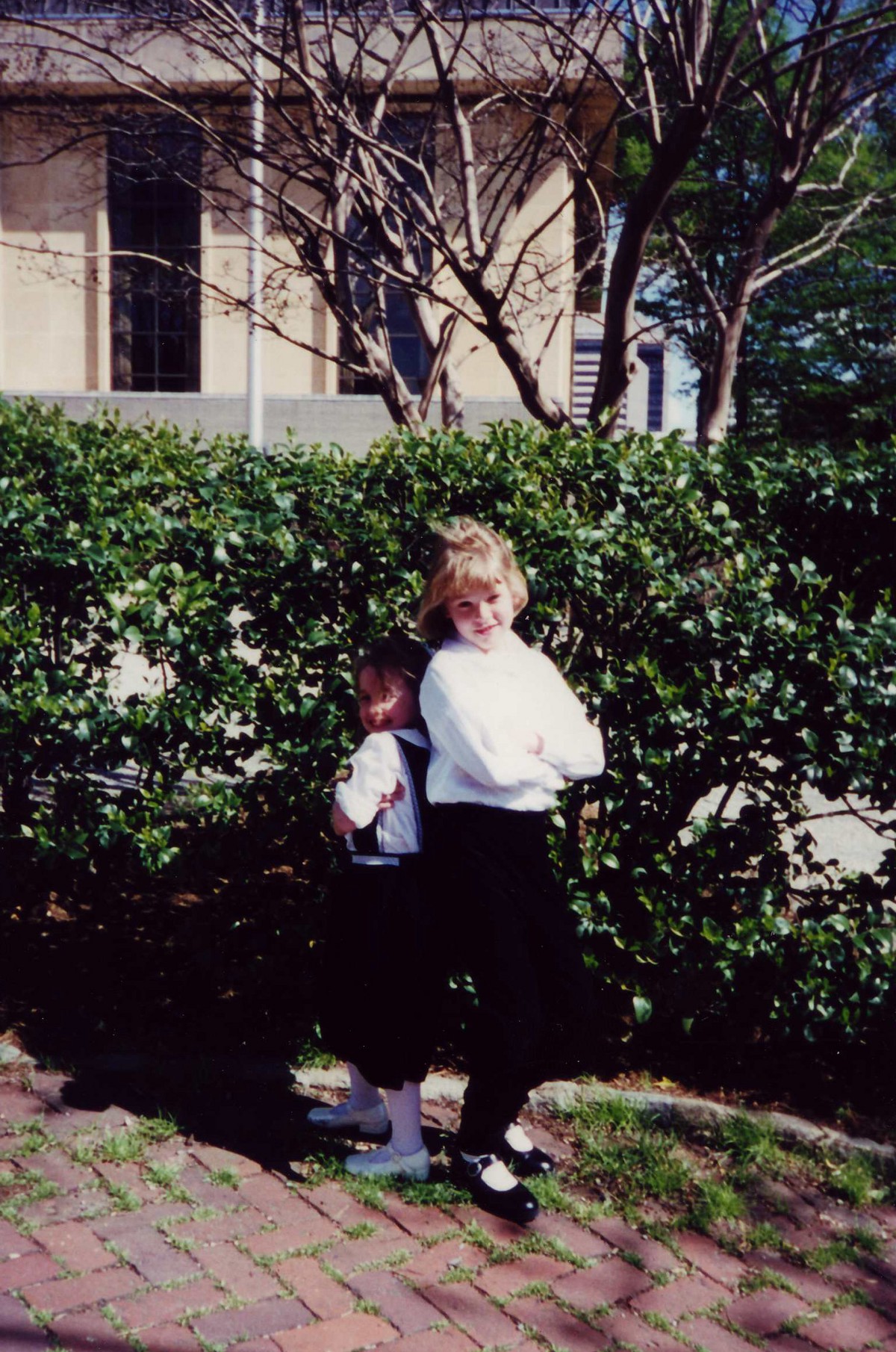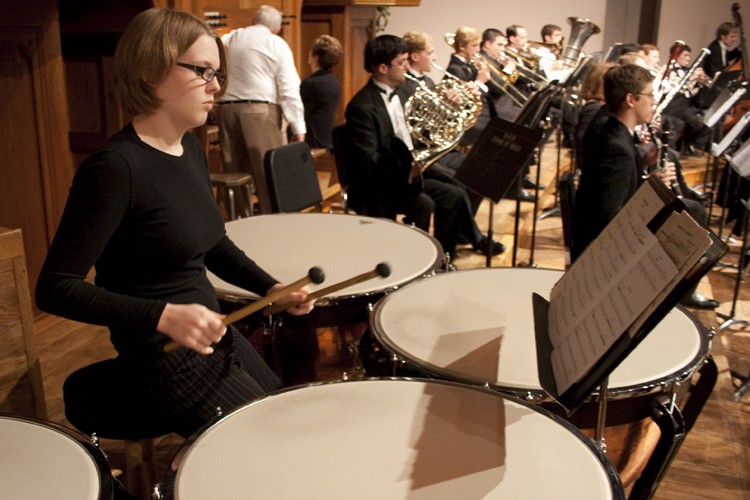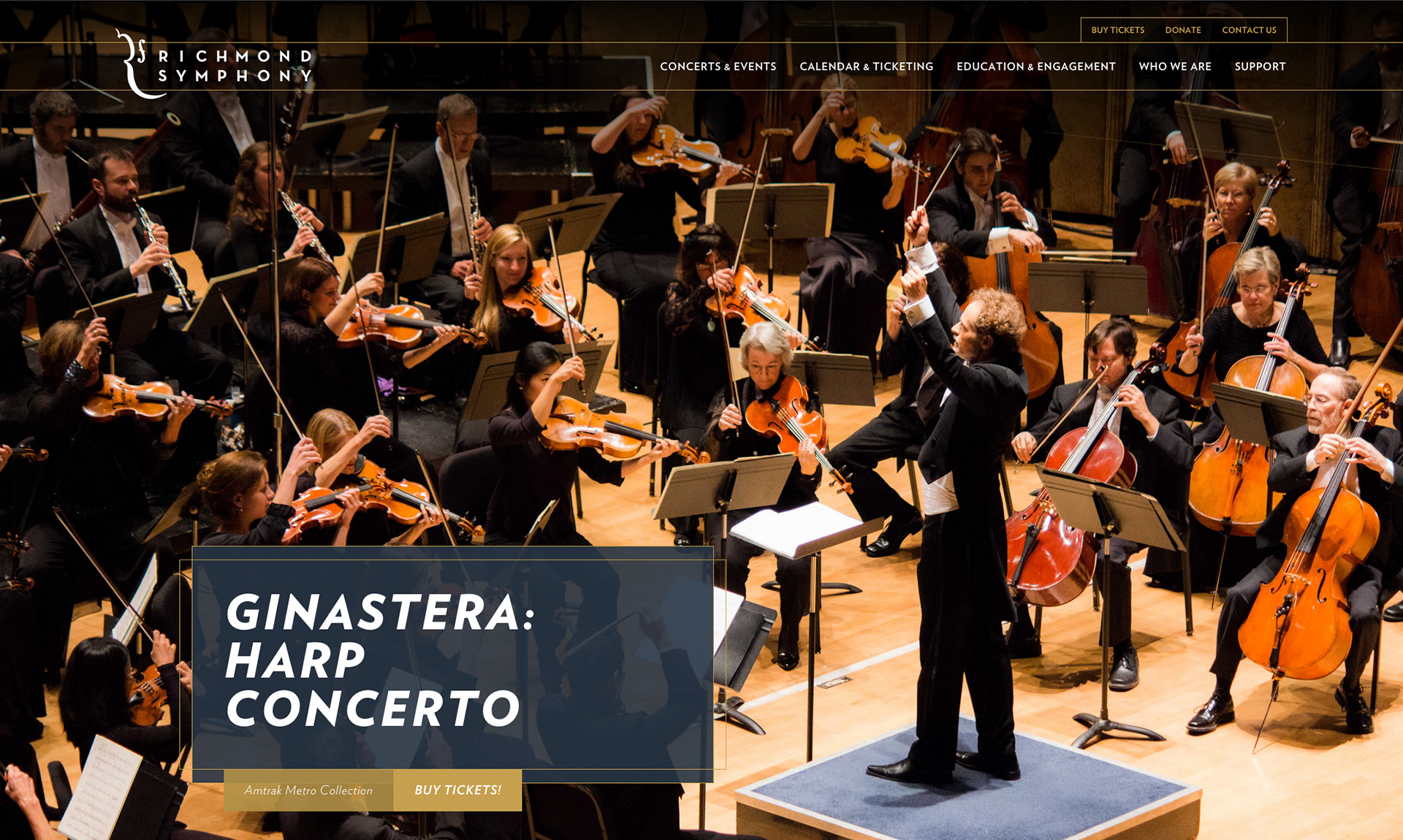Designing with Emotion
February 26, 2015
For as long as I can remember, there’s been a song stuck in my head. Music is always playing in my brain and I can’t turn it off. It wasn’t until recently that I discovered I wasn’t alone. In fact, my paternal grandmother — the Musical Matriarch of the family, if you will — told my father that she too has had a song in her head that won’t stop, shuffling through a playlist as vast or limited as her brain decides is most annoying. Thanks for passing that on.
It’s been clear to me that music affects me in a way most others do not experience. A chord progression can trigger instant tears with no reasonable explanation for it other than a blathering me saying “It was just so beautiful!” I am always tapping my fingers, whistling, singing or humming — making music however I can — much to my mother’s dismay when I was growing up.
My parents decided to enroll me in the Greater Richmond Children’s Choir (

My first year was a whirlwind of learning to sight read music, solfège, the Kodály Method, rehearsals, concerts, Choir Camp, discovering which part I sang, making new friends and making beautiful music. That first year turned into seven years of life-changing musical experiences with the GRCC, and a lifetime of music ever since.
Some of my fondest memories of my years in the GRCC — aside from our incredible travels, music tours, festivals and competitions — are the concerts we participated in with the Richmond Symphony.
Singing with the full orchestra and chorus was absolutely unforgettable, and my eyes are filling with tears now just thinking about it. Some of the pieces we performed in my earlier years were Britten’s War Requiem and Mendelssohn’s Elijah, but my favorite concerts with the orchestra were the non-traditional orchestral works, specifically the annual *Let it Snow* Christmas concert, and concerts like the Tribute to John Williams.
Being a part of the full ensemble was always a thrilling experience, but the opportunity to be a part of the choir for Beethoven’s 9th at the end of my first year in the GRCC was undoubtedly one of the most memorable.
I can picture it as clearly as the day I was there: I was a short Soprano (thankfully that was my only year as a Soprano) and stood on the front right of the choir, just behind the percussion section. As intently focused as I was on hitting those high notes, I couldn’t help but be absolutely transfixed by the timpanist during the entire movement. It was at that moment that I said to myself, “I’m going to do that one day.”

My family moved away from Richmond when I was 15 and I had to say goodbye to the GRCC, but I was still able to make music with my high school. In addition to singing in the choir, I decided it was the perfect time to try my hand at timpani and auditioned for the band and got the part. Timpani was my core instrument, but I also rotated around to other percussion instruments as needed. Two years later it came time to apply for colleges and scholarships, and the university I chose to attend gave me a voice scholarship. I wanted to continue playing timpani and percussion with the university’s Symphony Orchestra and Wind Symphony, so I signed up to be in all three groups. I wasn’t initially accepted in the Orchestra as the timpanist, but a stroke of luck caused the current timpanist to transfer colleges, and I was in.
I chose design as my major, fearing music would cease to be a passion if it became something I was forced to do for a living. My hours of rehearsal and performance became my outlet, a place for me to channel frustrations, happiness and to get it all out. My time in these groups solidified music’s place in my life, and music wove itself into the fabric of my being deeper than I ever thought possible.
And then I graduated.
My final concert with the School of Music was the Christmas concert just three days before I graduated, and I was able to play with the Wind Symphony, Symphony Orchestra and sing in the choir. When it concluded, I hugged my conductors and cried because it was all over. I had reached the end.
Graduation came and went, I began working full-time as a designer, and making music became a reference to a past life. The time since college has been a slow, painful adjustment to life without making much music, to what feels like the slow death of a part of my soul.
You get used to the change after a while. Life fills up with other things, and for me, it was filled with work. Designing websites quickly became a passion, and in early 2014, I made the jump to Colab to become a hybrid designer and developer.
A few months later, we landed the opportunity to redesign the Richmond Symphony website, and I could not have been more excited to be a part of the project. Our Lead Developer, Josh Scarbrough, handled a majority of the strategic work and all development, passing the baton to me to create module and template assignments, wireframes and site designs.
Most websites for symphony orchestras, especially the large, well-known organizations, are terrible. The London Symphony Orchestra, LA Philharmonic, Boston Symphony Orchestra… you name the orchestra and their website is poorly designed and unresponsive. I knew that we were given a significant opportunity to not only improve the Richmond Symphony’s website, but to also set the precedent for a modern, beautiful, responsive symphony website.

To say I was inspired by this project would be an understatement. I couldn’t believe how quickly this site came to life. My success was certainly due to Josh and the Symphony team’s fantastic job on the strategy and foundational work for the design, but my passion for this project as a result of my formative experiences with the Symphony was what fueled me and helped me design one of my favorite sites to date.
I approach my design work carefully and methodically, taking measures to avoid becoming emotionally attached to my work while remaining emotionally invested in my work. I believe design is hollow without emotion, but also feel designers can’t allow themselves to be blinded by the emotion and unable to make objective-based decisions. But I couldn’t keep my emotions from spilling over into this site’s design.
I remembered what it felt like walking into the Symphony, seeing the rich red and gold everywhere, the lights dimming and the movement of the musicians and instruments and conductor, and feeling the music that was being played envelop me. I remembered what it meant to be a part of that, what the Richmond Symphony experience was for me as a child and what it has become to me as an adult, and these things are what inspired me.
My greatest hope for this project is that our work will help the Richmond Symphony and its partner organizations continue to create experiences for our community that have as much impact and meaning as they did for me.
It would be remiss of me to not discuss the music I listened to while designing the site. My main albums were: Hans Zimmer’s Interstellar Soundtrack, Ralph Vaughan Williams’ Hodie, and Gustav Holst’s The Planets and St. Paul’s Suite. You can follow me on Spotify to see what album that’s currently on repeat.